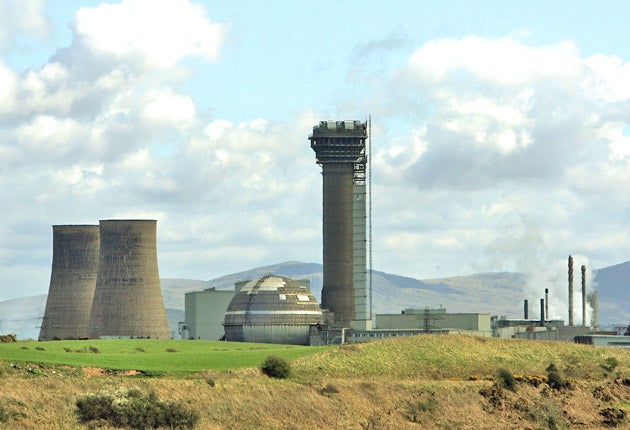How Sellafield 'mutilated' its workers' bodies

Organs and bones were illegally harvested from the bodies of dead nuclear industry workers at Sellafield without their consent over a period of 30 years, an inquiry found yesterday.
The relatives of 64 staff, many of whom only discovered their loved ones had been stripped of livers, tongues and even legs decades after they were buried, said the inquiry's findings proved the existence of an "old boys' club" among pathologists, coroners and scientists around Sellafield prior to 1992 which prioritised the needs of the nuclear industry above those of grieving family members.
In evidence to inquiry chairman Michael Redfern QC, who oversaw the Alder Hey inquiry, representatives of the workers said they felt as if bodies had been "mutilated" and treated as "commodities" to assist in research on behalf of the industry to disprove the link between cancers and radiation.
Some missing bones had been replaced with broomsticks for deceased workers' funerals. Mr Redfern said the families had been "wronged". "In most cases considered by the inquiry, relatives were let down at the time when they were most vulnerable by those in whom they were entitled to place an absolute trust," he said.
In the Commons, Energy Secretary Chris Huhne apologised to the families and said the practice had been stopped.
The 650-page report, following a three-year inquiry which also examined three other studies involving the nuclear industry in which 6,500 bodies, including children, were used, said the removal of organs and tissue was "unnecessary and inappropriate" in the majority of the Sellafield cases.
Pathologists who gave evidence to the inquiry were singled out for criticism. They were described as being "profoundly ignorant of the law" and of erroneously believing they could act with "carte blanche to remove tissue and organs for whatever purpose they saw fit". Coroners were also accused of leaving families in the dark and of assisting the nuclear authorities heedless of whether consent had been obtained or if the removal of organs had relevance to the cause of death.
The inquiry was ordered by then Trade and Industry Secretary Alistair Darling in 2007 when it first emerged that body parts had been removed between 1961 and 1992. The deaths of 76 workers – 64 from Sellafield and 12 from other UK nuclear plants – were examined, although the scope of the inquiry was later significantly widened.
The "driving force" behind the post-mortem extraction of organs at Sellafield was BNFL's chief medical officer Dr Geoffrey Schofield, an acclaimed occupational health expert. The inquiry found he was subject to "little if any managerial supervision or control of his activities" prior to his death in 1985.
An "informal arrangement" existed between Dr Schofield and pathologists at the West Cumberland Hospital and he was "easily able" to obtain organs for analysis. Dr Schofield and his successor would return to their laboratory at Sellafield with the organs in a cool box.
There they were weighed, labelled and stored in a freezer before being analysed and then taken to the low-level waste repository at Drigg. The report said Dr Schofield took "somewhat dubious steps to obtain organs" in cases that were of particular interest to him, and accused him of a "manipulation of the coronial process".
Case study: Stan Higgins
Dr Stan Higgins's father, also called Stan, was only 49 when he died.
The former member of the Parachute Regiment and keen rugby player had also been commended as a senior shift supervisor during the 1973 head-end plant incident, in which he had been severely exposed to ruthenium.
"He was the most irradiated man that ever lived," his son said yesterday. "He survived for about five years but he lost his thyroid and started having black outs and died of a heart attack."
Dr Higgins later learned that some of his father's tissue had been taken three years after he died, but he only discovered the true extent of the theft – vertebrae, mediastinum, kidney, liver, heart, spleen, sternum, both lungs and lymph nodes – three years ago.
"I believe there should be some retribution for the families who have had to go through this time and time again," he said.
Join our commenting forum
Join thought-provoking conversations, follow other Independent readers and see their replies
Comments